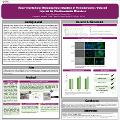Experimental and Biological Investigation of Hemodynamics-induced Injuries for Cardiovascular Disorders
| المؤلف | Shurbaji, Samar Haroon |
| المؤلف | Yalcin, Huseyin |
| تاريخ الإتاحة | 2021-10-18T08:15:37Z |
| تاريخ النشر | 2021 |
| اسم المنشور | Qatar University Annual Research an Exhibition 2021 (quarfe) |
| الاقتباس | Shurbaji S. H., Yalcin H., "Experimental and Biological Investigation of Hemodynamics-induced Injuries for Cardiovascular Disorders", Qatar University Annual Research Forum and Exhibition (QUARFE 2021), Doha, 20 October 2021, https://doi.org/10.29117/quarfe.2021.0094 |
| الملخص | Introduction:Abdominal aortic aneurysm (AAA) is a degenerative disease process of the abdominal aorta that leads to a focal dilation and irreversible remodeling of the arterial wall. In this condition, the aortic vessel diameter is dilated beyond 50% its its size.AAA might gradually expand until rupture If left untreated. Current surgical treatment options also are associated with high mortality rates. Therefore, for AAA, it is critically important to determine when the risk of rupture justifies repair. Current clinical practice is to surgically repair large AAAs with diameter > 5.5 cm. However, the incidence of rupture is independent of the diameter size. Currently there is no accepted technique to quantify the risk of rupture for individual AAAs. It is believed that, rupture locations are where peak wall stresses act. Hemodynamic forces by the flowing blood such as shear stress are also thought to contribute to the formation of aneurysm leading to rupture. Endothelial cells respond to disturbed flows in the aneurysm and initiate inflammation that are thought to be important in disease progression. However, little is known about the flow dynamics in AAA, and how it affects endothelial cell biology leading to AAA rupture. Methods: In this project, we will use different flow systems to induce shear stress over cell's monolayer. After inducing shear stress, gene expression for shear responsive genes and inflammatory markers will be assessed. Basically, we used the peristaltic pump to induce pulsatile flow over cell's monolayer, and laminar flow using our modified set up. We will compare gene expression data obtained from those two systems with data obtained from our Fluigent pressurized driven pump. Then, we will use another state-of-the-art system, namely a biological pulsed duplicator. Using the system, endothelial cells that are cultured within AAA shaped chambers will be exposed to physiological flows in order to reveal differential endothelial cell signals at potential rupture locations Results: In this project, pulsatile and steady flow were successfully induced and validated. Endothelial cells are mostly affected by mechanical signals, mostly shear stress. The cell's cytoskeleton is responsible for cell shape and integrity. Those proteins are affected by fluid flow. We expect to have a differences in the gene expression of different flow conditions. After we obtain the gene expression data, those will be compared to more precise flow set up ( Fluigent pressurized driven pump) |
| اللغة | en |
| الناشر | Qatar University Press |
| الموضوع | Abdominal aortic aneurysm endothelial cells microfludics shear stress |
| النوع | Poster |
الملفات في هذه التسجيلة
هذه التسجيلة تظهر في المجموعات التالية
-
الأبحاث [677 items ]
-
Theme 2: Health and Biomedical Sciences [80 items ]


